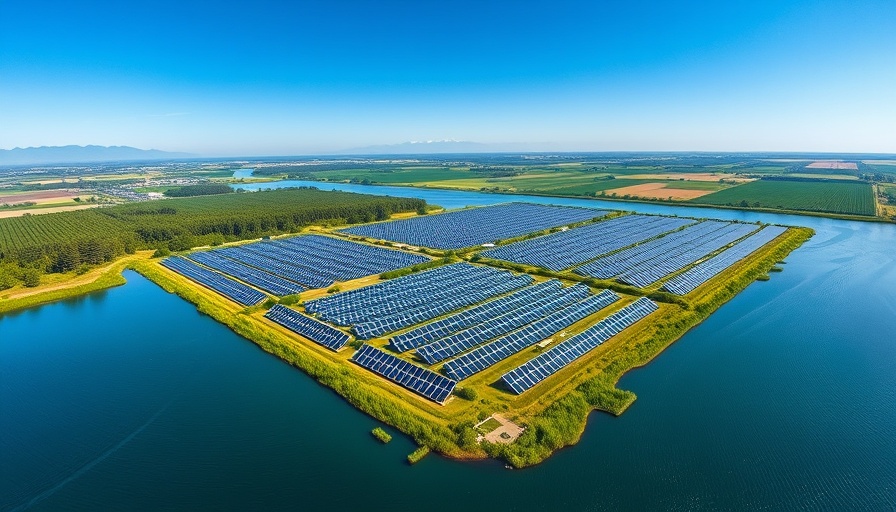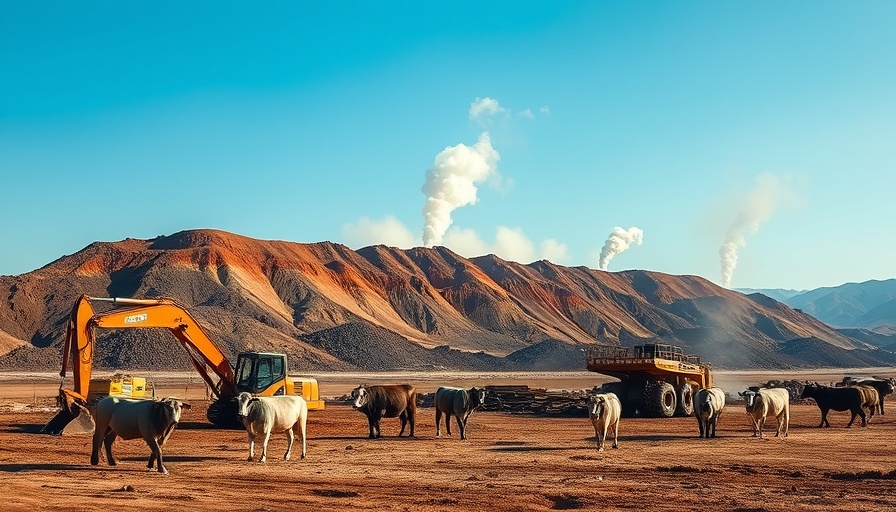
Revolutionizing Solar Energy with Les Îlots Blandin
In a significant advancement for renewable energy, the Les Îlots Blandin project in Haute-Marne, France, has officially launched as Europe’s largest floating solar power plant. This groundbreaking facility, operational since June 20, 2025, is set against the backdrop of a former 127-hectare gravel extraction site. Developed by Q Energy in collaboration with Velto Renewables, the plant stands as a beacon of innovation and promise for the future of solar energy.
The Benefits of Floating Solar Technology
Floating solar installations, like the one at Les Îlots Blandin, offer several notable advantages over traditional land-based solar farms. Not only do they reduce land use conflicts, but being stationed on water lowers the operating temperature of solar panels, enhancing their efficiency. According to Energy Sage, this unique cooling mechanism can lead to a longer lifespan for the panels as well. Additionally, the floating design helps mitigate local environmental impacts by reducing bank erosion and curbing water evaporation, crucial during periods of drought.
Alignment with France’s Renewable Goals
With renewable energy constituting 24.2% of France's total electricity generation, the launch of Les Îlots Blandin is timely. This facility, which can sufficiently power 37,000 homes and is projected to cut carbon emissions by 18,000 tons annually, aligns perfectively with France's ambitious goal of achieving net-zero emissions by 2050. Experts suggest that tapping further into floating solar and agrivoltaic initiatives can propel France toward its energy targets.
Challenges and Future Prospects in Floating Solar Energy
While the benefits of floating solar are clear, economic challenges persist. The initial installation costs are usually higher due to the specialized materials and technology needed. However, Les Îlots Blandin has shown that with strategic investments — a mix of private and public funding — floating solar projects can overcome these economic barriers. As highlighted by Lucas de Haro, CEO of Velto Renewables, long-term investment strategies will be essential for sustainability in France's expanding renewable energy landscape.
Looking Ahead: The Future of Renewable Energy in Europe
The success of the Les Îlots Blandin project could serve as a model for similar initiatives across Europe. With its initial panel installation of over 135,000 and a capacity of 74.3 megawatts, it demonstrates the potential for scaling this technology on a broader scale. As more regions recognize the benefits of utilizing underused industrial sites for renewable projects, we may see similar facilities spring up, further contributing to a diversified and resilient energy grid.
Conclusion: Why Floating Solar Matters
The floating solar sector presents a compelling opportunity not just for energy production, but also for environmental conservation. Innovations like Les Îlots Blandin not only pave the way for cleaner energy but also illustrate how repurposing existing land — devoid of land-use conflicts — can lead to sustainable development. As Europe continues to innovate in the renewable energy space, projects like this will be vital for a greener, energy-efficient future.
 Add Row
Add Row  Add
Add 




Write A Comment